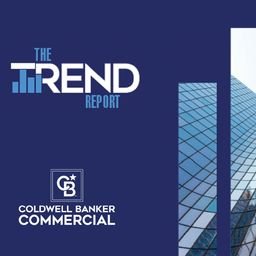Viewpoints
Industry insights, market outlook reports and commercial real estate
news, and trends from the Coldwell
Banker Commercial brand.
2024 Consumer Trends Impacting Retail
Thanks to COVID and inflation, retail has undergone significant transformations over the last few years, impacting consumer preferences and behaviors. Whether it is dining or shopping trends, the retail landscape is constantly evolving, that has been especially true in 2024. Placer.ai recently published a white paper titled, 'Meeting 2024’s Consumer,' that explores consumer trends and behaviors in 2024 and how that is impacting retail overall.One particular trend that stood out in this report amidst the tumultuous retail landscape has been the rise of Discount & Dollar Stores. Pre-pandemic expansion initiatives by industry leaders, like Dollar General and Dollar Tree, laid a strong foundation, positioning these essential retailers as an affordable and reliable option during the initial stages of lockdowns. While Discount & Dollar Stores were expanding their presence throughout the US, these retailers also diversified their food and drink offerings to grocery shoppers during peak stay-at-home orders. The expansion of the physical footprint of Discount & Dollar Stores, the grocery selection, and affordable prices suddenly put them in direct competition with Grocery & Superstores. Although visits to Grocery Stores and Superstores significantly outnumber visits to Discount & Dollar Stores, the rise in popularity should not be ignored. While Discount & Dollar Stores continue to rise in popularity, the Superstore sector is forced to navigate shifting consumer preferences and behaviors. For example, with products like the Stanley Cup going viral online, Target made the decision to venture into sports merchandise with the Stanley Cup partnership, underscoring a nuanced understanding of consumer desires and trends that extend beyond the realm of essentials. Similarly, the allure of Costco and other membership clubs among affluent demographics highlights a burgeoning demand for premium offerings amidst a landscape dominated by budget-conscious consumers.As you can see in the chart below, Costco and Target dominate the competition in the Superstore space, attracting the most affluent clientele, despite inflation and high costs of living. The success of these retail giants not only signals the presence of a consumer base willing to shop beyond basic necessities but also underscores these retailers' ability to stay adaptive and agile in an ever-changing landscape. Costco's ability to offer both premium options and affordability through bulk purchasing creates a unique capability to cater to the needs of a diverse audience, straddling the middle ground between budget-conscious shoppers and consumers who are willing to spend more on high-end foods, drinks, and products. In essence, it showcases their capacity to effectively navigate the nuances of consumer preferences, thus solidifying their position as leaders in the retail landscape.For investors, staying attuned to these shifts isn't just about chasing the latest trends; it's about recognizing the underlying currents that drive consumer decision-making. By deciphering the evolving preferences and spending patterns of consumers, investors can identify lucrative opportunities and allocate capital strategically. Whether it's recognizing the resilience of Discount & Dollar Stores amidst economic uncertainties or discerning the growth trajectory of niche segments within the Superstore domain, these insights aim to guide investors towards informed investment decisions based on consumer patterns.
Ecommerce Sales in the US: What to Know
The Census Bureau recently reported that total ecommerce sales in the US soared by 7.2% year-over-year in Q4 2023, reaching an all-time high of $325 billion.
Healthy Appetites Drive Dining Sector Trends
Location analytics, visitation patterns, demographic insights, and psychographic trends are shaping the trajectory of the dining sector in 2024.
The Retail Opportunities of Stadiums
Sports stadiums not only host sporting events but also concerts and other shows, creating enormous opportunities for a mix of uses including retail, dining, and advertising.
Consumer Trends & Celebrities Shaping the Retail Landscape in 2024: Part 2
Dive into second-hand apparel retail trends, the rise in placemaking in retail, as well as entertainment and dining trends.
The Food Hall Boom: Exploring the Surge of Food Halls Beyond Urban Centers
The burgeoning popularity of food halls, extending beyond urban centers to suburban landscapes, is not just a culinary trend but a lucrative investment opportunity that savvy investors should closely monitor.
Brighter Days Ahead for Retail Sector ... Thanks to 2023 Holiday Sales
Deloitte has recently released holiday sales projections for the retail sector, and the 2023 holiday season is poised to strengthen it further. According to Deloitte's annual holiday retail forecast, holiday retail sales are expected to increase between 3.5% and 4.6% in 2023.
2023’s Top Performing Retail Hubs: Consumers Create New Paths to Retailers
The retail industry has experienced intense highs and lows in recent years. In-person store visits experienced a substantial increase in the latter half of 2023, largely attributed to the phenomenon known as "revenge shopping." This concept captures the enthusiasm people have for spending money on shopping, driven by the sense of deprivation they experienced during the pandemic. However, this surge was brief, as it was followed by the Omicron wave in early 2022, coupled with record-high gas prices and subsequent inflation, which hindered the emerging recovery. Nevertheless, there is a robust appetite for in-person shopping among consumers today. It's worth noting that foot traffic data suggests that the performance of brick-and-mortar retail in 2023 varies significantly from one region to another. According to research analytics by Placer.ai, New York, NY; San Jose, CA; New Haven, Bridgeport; Hartford, CT; and Washington D.C. are leading the pack as thriving retail hubs. As Placer.ai highlights in their study, the New York-Newark-Jersey City core-based statistical area witnessed a 1.3% increase in store visits at the beginning of the year. One of the main factors contributing to this trend was the significant return of office workers to Manhattan. In January, over 86% of office workers returned to their workplaces, a stark contrast to the 38% in 2022. February saw nearly 32% of employees returning to work, almost double the number from the same month in the previous year. This increase in office workers also led to a surge in foot traffic in key retail areas. Store visits in May to some of New York’s prime retail corridors like Times Square & 42nd Street, North 5th Ave., and the Flatiron District saw impressive rises of 12.8%, 10.2%, and 13.8%, respectively. These increases were notably higher compared to the nationwide rise of just 1.7%.Interestingly, New Yorkers who permanently left their homes and offices during the pandemic contributed to a retail resurgence north of the city, particularly in Connecticut. Thousands of them relocated to Connecticut, resulting in significant traffic increases in New Haven, Hartford, and Bridgeport. Over the past three years, these Connecticut CBSAs have experienced a steady increase in population, with many newcomers coming from New York City neighborhoods with higher median home values. Placer.ai analyzed Zillow housing data and found a pattern of high-income homeowners moving to more affordable areas in Connecticut. This allowed them to sell their expensive properties and purchase more affordable ones in Connecticut, leaving them with high disposable incomes to spend on home improvement projects and shopping trips. In the first half of the year, Silicon Valley emerged as a shopping hotspot in California. The San Jose-Sunnyvale-Santa Clara CBSA saw shopping center traffic gains of up to 5% from February to April. In contrast, all other major California CBSAs experienced declines in traffic during the same period. The affluence of residents in Silicon Valley played a significant role in drawing crowds. Nearly 45% of trade areas in the San Jose CBSA had median household incomes exceeding $200,000 per year, while only about 25% of shopping center trade areas in California maintained this income level.Georgetown, a popular neighborhood in Washington, D.C., stood out for its affluent and youthful population. This made it a prime location for digitally native brands looking to establish their presence in physical retail. In the first half of the year, several youth-oriented brands experienced significant increases in foot traffic compared to 2022. Anthropologie recorded a 45% increase, while Everlane and Warby Parker saw rises of more than 25%.Thriving retail hubs often serve as indicators of economic vitality and consumer demand, providing valuable insights into market trends and potential investment hotspots. Moreover, understanding the factors driving success in these hubs, such as population growth, income levels, or shifts in consumer behavior, can help investors position themselves strategically. Furthermore, staying connected to thriving retail hubs enables investors to diversify their portfolios and mitigate risks associated with economic downturns or localized challenges.
C-Store Trends & The Brands Leading the Way
Many recall convenience stores as small retail establishments attached to a gas station, where one might grab a drink or a pack of gum. However, as indicated in Placer.ai's white paper titled "C-Store Trends & the Brands Leading the Way," contemporary convenience stores, or "C-stores," have undergone a substantial transformation. While some convenience stores still derive their revenue from gas and automotive services, others have repositioned themselves as destinations where patrons can enjoy specialty coffee, grab a quick dinner, or conveniently acquire a selection of grocery items on their way home from work, as highlighted in the white paper. Or in the case of some like Buc-ee's, convenience has been elevated into a whole new super-sized extravaganza attraction.The Rise of the C-StoreIn recent years, C-stores have demonstrated remarkable success in the retail sector, outpacing several related categories, including traditional grocery stores. Furthermore, despite the challenge of higher gas prices, the white paper highlights a notable increase in foot traffic at convenience stores. This surge in visitation can be attributed to two primary factors: inflation and improved food offerings. With inflation increasing prices, individuals increasingly seek affordable indulgences and cost-effective alternatives. This shift in consumer behavior has led many people to favor convenience stores over extensive trips to larger grocery stores. Additionally, the enhanced food offerings in these establishments, including options like fresh coffee, baked goods, and fast food, have contributed significantly to their growing popularity.C-Store Brands Leading the WayThe C-store industry exhibits significant regional variations. Despite being a national brand, 7-Eleven holds a dominant presence on the West Coast. Maverick – Adventure's First Stop enjoys renown in Wyoming and Utah, while Cumberland Farms stands as the primary C-store choice in New England. In Texas, Buc-ee's holds exceptional popularity, and for residents of Florida, Maryland, Pennsylvania, Virginia, and New Jersey, Wawa is the preferred and go-to convenience store.Staying up to speed with C-store trends is of paramount importance for investors in today's dynamic market landscape. The evolving nature of C-stores, as highlighted by the transformation from simple gas station add-ons to multifaceted retail establishments, presents compelling reasons for investors to keep a keen eye on this sector. The remarkable growth and adaptability of C-stores underscore their potential as rewarding investment opportunities. As these stores diversify their offerings, investors have the chance to tap into a market that not only caters to traditional automotive needs but also serves as a destination for food, beverages, and everyday essentials. Recognizing the trends in convenience store evolution can help investors identify the brands and chains that are thriving in this competitive environment.
THE TREND REPORT
Retail Renaissance: Adapting Malls for Success. The modern retail landscape is undergoing significant transformations, spurred by evolving consumer behaviors, technological advancements, and economic shifts. Looking ahead to 2023 and beyond, it is crucial to understand the four key themes that are shaping the future of malls and their relevance.









